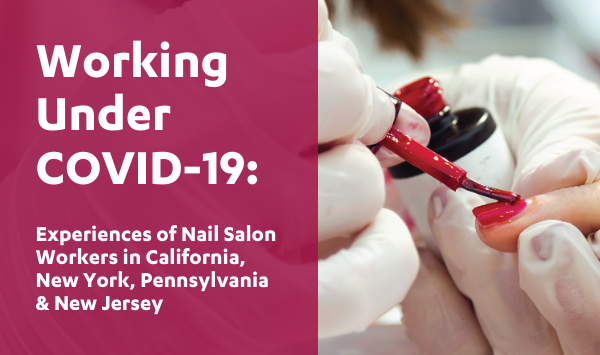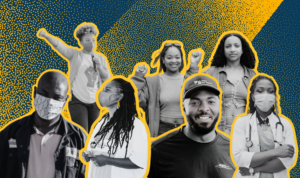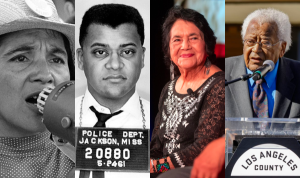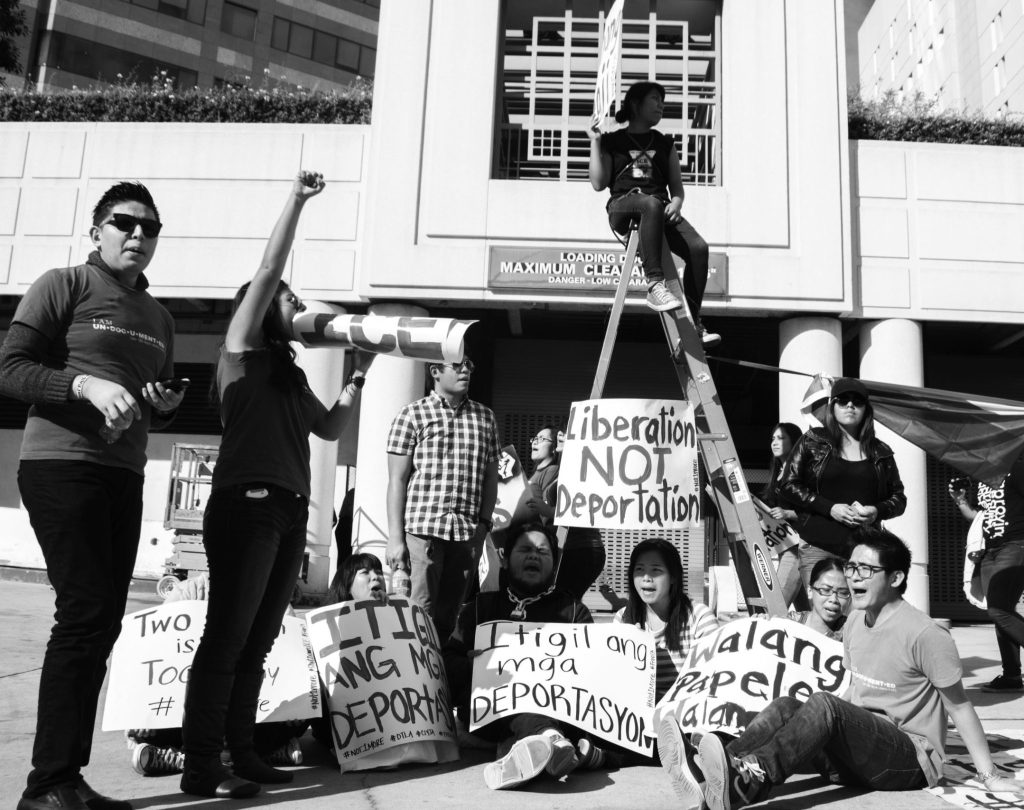New Report Captures National Trends in Nail Salon Sector During COVID-19
The COVID-19 pandemic has destabilized the nail salon industry in the U.S. The Labor Center’s newest brief, Working Under COVID-19: Experiences of Nail Salon Workers in California, New York, Pennsylvania & New Jersey, captures national trends in the nail salon sector during COVID-19, and identifies the industry’s need for new practices to ensure worker health and safety, as well as a just recovery.
Made up of mostly Asian immigrant women, nail salons in the U.S. are predominantly small businesses, and closures have uniquely devastated both workers and owners. The changing dimensions of regional vaccine and testing access and vaccine hesitancy, as well as the emergence of new COVID-19 variants such as Delta and Omicron, have affected customer flow, salon worker rehiring, and ultimately, the viability of these businesses. Issues that predate the pandemic concerning labor, health, and safety have only intensified since the pandemic’s start.
This brief compiles surveys, interviews, and focus groups from three regions in the four states across the U.S. with the most nail salons across the country—California, Pennsylvania, New Jersey, and New York. Three community organizations that have worked with nail salon workers, Adhikaar for Human Rights & Social Justice, the California Healthy Nail Salon Collaborative (CHNSC), and VietLead, launched this research in collaboration with the UCLA Labor Center to better understand the experiences of salon workers during COVID-19.
Each organization designed their own surveys that addressed conditions since nail salons have reopened, including: wages, hours, clientele flow, PPE protocol and access, health and safety compliance, and financial concerns in the pandemic. The analysis is based on surveys from 427 workers, including 158 surveys from California, 222 from New York City, and 47 from Philadelphia and New Jersey regions, as well as focus groups or interviews of 13 workers across all regions.
According to the brief, nail salon workers returned to a sector with reduced employment and business. Workers in California (70%) and Philadelphia (66%) reported that their salon reopened with 5 or less employees. In New York, about half (45%) reopened with 5 or less. All the regions reported a decline in work. In New York, 80% of workers worked with reduced hours. Three quarters of California workers found that business was slow since reopening.
One worker shared her challenges with finding work: “My salon is closed because of COVID-19. I’ve been looking for a job and it’s hard to find one. Many nail salons have closed…Even if we get to work [at a salon] for 2-3 days a week, it’s not that easy… They only give us 4-5 hours a day, and then ask us to go home. There are so many problems after COVID-19. The nail salon worker’s job is in trouble.”
Additionally, nail salon workers’ health and safety required new protocols once back at work. At the time of the surveys, a majority of workers received face masks and face shields from their employers in all regions, including three out of four workers in California (76%) and New York (75%). Physical distancing measures were strongly implemented in California (99%) and Philadelphia (94%). Salons in California (100%) and Philadelphia (94%) allowed for disinfecting between customers.
Describing the increase in a worker’s expenses for PPE against the lack of customers, one manicurist shared, “Now, although the COVID-19 pandemic is over and the salon is open again, I want to quit my job. It is because supplies are so expensive while we have no customers. Everyone is still afraid of the pandemic.”
Nail salon workers’ income was impacted, despite the ability to return to work. Workers overwhelmingly did not receive hazard pay in the pandemic in California (95%) and Philadelphia (96%). Eight in 10 workers’ pay decreased in California. Workers also found themselves financially insecure or uncertain about their ability to pay for food in California (63%) and in Philadelphia and South Jersey (55%).
One worker described balancing their fear of new and emerging variants with their need to pay the bills: “… I’m nervous and confused on whether I should go to work. Sometimes I think, I shouldn’t go. Then again, I think I should go because we must eat, we must live… If the number increases, then I must stop. The main thing is to be alive rather than be hungry. I’m not sure whether to continue or not.”
Recommendations from the brief’s authors include: (1) providing recovery-related short-term relief and long-term solutions for nail salon workers and the industry as they continue to bear the long-term effects of the pandemic, (2) ensuring that strong worker protections are in place as the industry continues to recover from COVID-19, (3) supporting policies and initiatives for language justice in the nail salon sector, (4) conducting further participatory research on the impact of the COVID-19 pandemic and beyond as the industry adapts, and (5) promoting broad based systemic change to address anti-Asian racism through comprehensive strategies.
This report builds from three previous reports on the nail salon industry, including Reopening During COVID-19: The Experience of Nail Salon Workers and Owners in California (2021), A Survey of Nail Salon Workers and Owners in California During COVID-19 (2020), and Nail Files: A Study of Nail Salon Workers and Industry in the United States (2018). This research received coverage in The New Yorker, the Los Angeles Times, Vox, The Washington Post, The New York Times, and other media outlets.



